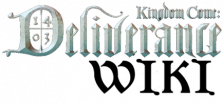In the late 14th and early 15th centuries, both Czech and German were spoken in the Czech Lands. German first appeared after German colonization and made its way largely into the towns, the upper classes, and literature - love poems and bureaucratic language. Czech had evolved from old Slavonic and was spoken by the poorer residents, becoming an official language only during the reign of Charles IV.
Apart from these two languages there was Latin, the language of books, chronicles, learned treatises, official deeds and documents. Latin was the language of the Church and the Bible, and served as the medium of international communication. The development of the Slavic language and its emancipation was the domain of the monasteries, including Sasau, from the early Middle Ages on. The preacher Jan Hus was one of the pioneers of fostering the Czech language.
As for literature, Czech found its due place from the early 14th century in various genres: spiritual and secular lyricism (love stories), epics and dramas. Among the oldest examples were legends, e.g. about Judas Iscariot, Pontius Pilate, the lives of the Saints, knightly epics, chronicles and satires. Apart from official documents in Latin, correspondence was written in Czech from the end of the 14th century.
In the late 14th and early 15th centuries, both Czech and German were spoken in the Czech Lands. German first appeared after German colonization and made its way largely into the towns, the upper classes, and literature - love poems and bureaucratic language. Czech had evolved from old Slavonic and was spoken by the poorer residents, becoming an official language only during the reign of Charles IV.
Apart from these two languages there was Latin, the language of books, chronicles, learned treatises, official deeds and documents. Latin was the language of the Church and the Bible, and served as the medium of international communication. The development of the Slavic language and its emancipation was the domain of the monasteries, including Sasau, from the early Middle Ages on. The preacher Jan Hus was one of the pioneers of fostering the Czech language.
As for literature, Czech found its due place from the early 14th century in various genres: spiritual and secular lyricism (love stories), epics and dramas. Among the oldest examples were legends, e.g. about Judas Iscariot, Pontius Pilate, the lives of the Saints, knightly epics, chronicles and satires. Apart from official documents in Latin, correspondence was written in Czech from the end of the 14th century.
